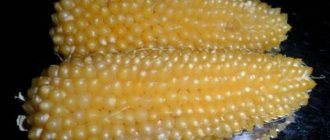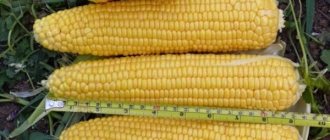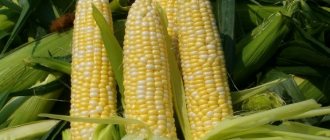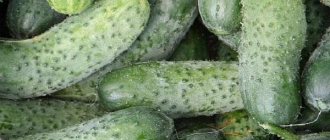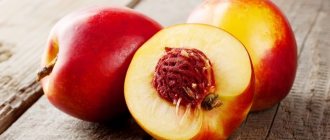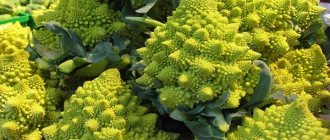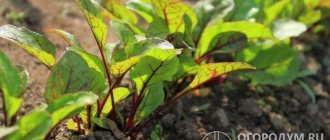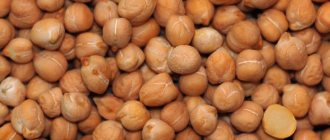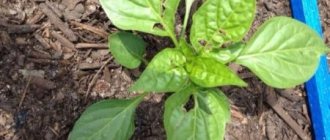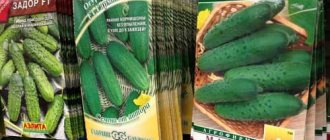The cereal crop that is popular today has ancient roots. The remains of cobs that grew more than 5 thousand years ago were found in two Mexican states. Since then, many varieties have been developed. Certain types of corn are used to make popcorn. Children love to eat young boiled cobs. The grain crop is in demand in agriculture. It produces nutritious feed for poultry and animals. Each variety of corn is bred for a specific use. Before planting a crop on your site, you need to find out all its characteristics.
Corn varieties popular among summer residents
Every summer resident who has children plants several holes of corn. It is better to choose sweet varieties with yellow grains for these purposes. When they are milky ripe, they are tasty even raw, but more often the cobs are boiled.
Megaton F1
The culture, which is hybrid in origin, has an average ripening period. The cobs are ready for harvesting after 85 days. Up to 3 of them are formed on the stem. The tall plant grows up to 2.5 m in height. The powerful root system reliably holds the powerful stem and prevents the trunk from falling to the ground. The length of the cobs does not exceed 30 cm. The grains become yellow after ripening.
Noah F1
The hybrid obtained by Dutch scientists is considered early. The harvest ripens 70 days after germination. The plant grows no more than 2 m in height. The ears are formed of a regular shape, up to 24 cm long. The weight of each specimen does not exceed 450 g. Mature grains become rich yellow. Young corn is sweet. Children eat it boiled with great pleasure. The grains are suitable for preservation.
Important! The hybrid is endowed with powerful immunity against bacterial rot.
Gourmand Belogorya
The domestic selection of the variety is perfectly adapted to our conditions. Corn is found in many summer cottages. In terms of ripening time, the crop is medium-early. The harvest ripens in 85 days. The plant is of medium height, usually no higher than 1.5 m. From an area of 1 m2 it is possible to obtain up to 5 kg of harvest. The ears grow 20 cm long and weigh about 175 g. The mature grains are large, fleshy, and yellow in color. Sweet corn is used for preservation and consumption after cooking.
Vega F1
The culture is considered a mid-early ripening hybrid. The harvest can be harvested 80 days after germination. The plant grows a powerful stem 2 m high. A strong root system reliably keeps it from falling to the ground. The hybrid adapts perfectly to any weather conditions. The cobs grow up to 24 cm long. Sweet grains are used for consumption and preservation.
Honey Bantam F1
This hybrid can be grown in cold regions with short summers. Ultra-early ripening allows harvesting in 70 days. The plant consists of a thick stem 180 cm high. Up to 4 ears are formed. The length of each specimen reaches 30 cm. Young yellow grains are sweet and tender. They are used in cooking, for preservation, and as a treat for children. Productivity is 7.5 kg/1 m2.
Important! The hybrid is unpretentious, produces excellent seedlings and yield when sowing seeds directly into the garden.
Testi Dream F1
The popularity of the hybrid was brought not only by the super-early ripening period of the crop - 73 days. The culture produces super-sweet yellowish grains. They are consumed at milk maturity. The cobs grow 25 cm long and 5 cm in diameter. They are formed at a stem height from the ground of 55 cm. The grains in the cob are arranged in 16 rows. The plant itself stretches up to 190 cm.
Morning song F1
The culture is hybrid, mid-early, bears mature heads of cabbage in 80 days. Sometimes the cleaning time lasts up to 100 days. The plant is considered low-growing. The stem does not extend more than 1.4 m. However, on a short plant, large cobs are formed, 17 cm long, weighing about 200 g. Milk ripe grains are valued. They are sweet, tender, suitable for eating and canning.
Important! To increase yield, more frequent watering is required. The hybrid is considered moisture-loving.
Valmond F1
The origin of the hybrid culture is Spanish. Ripening dates are mid-early. The harvest is harvested after about 80 days. The hybrid has large cobs and is popular. They grow to a length of 27 cm and a diameter of 6.5 cm. The weight of one specimen is more than 0.5 kg. The light yellow beans are rich in sweetness. The plant grows a powerful stem up to 2.2 m high. Two cobs grow. A strong root provides resistance to the plant from lodging to the ground. The hybrid easily tolerates droughts and has strong immunity to viral and fungal diseases. Heads of cabbage collected at milk maturity can be stored for up to 2 weeks.
Spirit F1
It is possible to grow corn in all areas, regardless of climate. The early ripening of heads of cabbage after 65 days makes it possible to cultivate the hybrid where the summer is short. The plant grows a powerful stem 1.8 m high. Heads of cabbage grow 22 cm long, with an average weight of 200 g. The grains are yellowish and sweet. Housewives use them for preservation, and children use them fresh.
Advice! For early harvests it is necessary to grow seedlings. Sowing takes place around April 15th. Seedlings are transplanted into the ground from the first days of June.
Arkon F1
The new product was developed by Spanish scientists. The early-ripening hybrid produces a harvest in 68 days. The plant grows a stem up to 1.8 m in height. 2 heads of cabbage are formed along the trunk, which when ripe reach a length of 25 cm. Sweet grains are eaten after cooking and are suitable for preservation. The hybrid is resistant to bad weather and does not require frequent watering. Ideal for growing in regions with short summers.
Bonduelle
Under this name, some companies sell corn seeds, which they pass off as a variety. This is actually the name of a brand of canned food. The manufacturer uses several varieties of corn. Preference is given to sugar types, for example, Trophy or Spirit. The manufacturer uses early varieties with yellow ears no longer than 22 cm. One of the important requirements is the use of only large grains with a delicate structure and presentation.
Trophy F1
The crop produces an early harvest, ready for harvesting after 75 days. The hybrid is drought-resistant and has strong immunity to disease. When choosing this variety of corn for growing in a region with short summers, you need to take one feature into account. Young seedlings are sensitive to cold and require frequent watering. The plant grows a strong stem 2 m high. The ears with orange grains weigh 270 g. They reach 22 cm in length. The plant is not prone to lodging to the ground.
Legend F1
The popularity of the hybrid was brought by sugar grains. The early crop harvest ripens in 72 days. The powerful stem will grow 1.7 m in height. The cobs weigh 250 g. The length of each specimen is about 18 cm. They reach 4.5 cm in diameter. Mature grains become golden in color. On the stem, the cobs grow at different heights - 55 and 75 cm. The crop is immune to rust and the formation of rot.
Sundance F1
The hybrid, beloved by summer residents, produces sweet cobs in 65 days. The plant has a standard height of about 1.8 m and has strong immunity. However, young seedlings are afraid of cold weather and require frequent watering and fertilizing. The heads of cabbage grow up to 20 cm in length, and the weight reaches 230 g. The grains are yellow in color, sweet, and are especially valued in milky ripeness. They are eaten fresh and used for preservation.
Dobrynya F1
The early-ripening crop was obtained by Canadian breeders. The harvest begins to ripen after 70 days. The strong stem, resistant to falling to the ground, grows 1.7 m high. The cobs form large. The first specimen grows on a stem 65 cm high from the ground. The diameter of the cobs reaches 6 cm, and the length is 28 cm. Large yellowish grains have a thin shell, and are often used for consumption in dairy form.
Important! The hybrid is not affected by mosaic and rust.
Caramello F1
The origin of the hybrid is Turkish. The early culture ripens in 60 days. The height of the plant is 1.4 m. On a low stem, weighty ears 20 cm long emerge. Each specimen weighs about 275 g. The plant is distinguished by a thick stem and large leaves. Its short stature and branched root system give it stability and prevent it from falling to the ground during the wind. Young shoots are sensitive to cold weather and spraying with herbicides.
Important! Individual plants are capable of forming 4 ears.
Golden Bahtam
A high-yielding variety is considered mid-early. Harvesting begins after 75 days. The height of the stem is 1.8 m. The first ear appears at a height of 55 cm from the ground. Their total number reaches 4-7 pieces. The variety is considered high-yielding. The cobs grow 20 cm long. The weight of each specimen reaches 200 g.
Sweet nugget F1
The authorship of the early-ripening hybrid belongs to German scientists. Harvest ripening occurs on the 70th day. The plant grows up to 175 cm in height. On a thick stem, 2-3 heads of cabbage 23 cm long are formed. The formation of the first copy occurs 65-75 cm higher from the ground. The sweetness of the grains is achieved by an increased amount of sugar and a reduced amount of starch.
Important! The hybrid is recommended for private and farm cultivation.
Features of cultivation
The plant loves sun, moderate watering and fertilizing. The technology for growing sweet corn is not particularly complicated, but requires compliance with a number of rules to obtain a rich harvest:
- Planting begins in the first ten days of May in the southern regions, and at the beginning of summer in central Russia.
- Choosing the right variety is one of the main conditions for obtaining the expected result.
- Sow in areas protected from drafts, with sufficient lighting.
- The soil must be fertile and allow moisture and air to pass through. Swampy soils are not suitable for growing corn.
- Heavy and clogged soil, poor in nutrients, is put in order: peat, sand, and organic fertilizers are added. Acidic soil is treated with lime, sandy soil is enriched with organic matter. The earth is dug up using a bayonet shovel and loosened.
- Sweet corn is planted in fields where potatoes, legumes, melons or tomatoes were previously grown.
- Before sowing, the grains are sorted and whole and large-caliber seeds are deposited. Testing for germination is carried out by soaking the material in a low concentration saline solution. The settled seeds are used for planting.
- Disinfection of grains is carried out using a concentrated solution of potassium permanganate.
- Seeds are sown in furrows 7-8 cm deep, with an interval of 10-15 cm. The beds in the neighborhood are formed at a distance of 40 cm. This ensures better cross-pollination.
- In practice, the square-cluster sowing method is often used. The plot of land is divided into squares and holes up to 10 cm are dug. Seeds are planted in them and covered with earth.
- Planting sweet corn is possible using seedlings. Seeds are sown in pots with a nutrient substrate in early spring. Seedlings are planted with the onset of warm weather.
- From the moment of rapid growth, the corn is hilled, weeded and fertilized. Watering is carried out twice a week.
- Nitrogen, phosphorus, potassium, and compost are used as fertilizing.
- Stems are tied up if varieties are prone to lodging.
- From time to time, pinching is carried out, leaving 2-3 ears.
The best varieties of corn with popping kernels for making popcorn
Adults and children fell in love with the overseas delicacy. However, to obtain it you need special varieties of corn, the grains of which burst when heated. This happens from their oversaturation with starch. Additionally, the grain contains moisture. During heat treatment, steam is generated under the grain shell. It cannot withstand the pressure and bursts with a bang. The finished popcorn is flavored according to your preferences: salted, poured with syrup, sprinkled with powdered sugar.
See also: Is corn a legume or not, a vegetable or a fruit?
Volcano
The harvest of the mid-early crop ripens in 80 days. The French hybrid is distinguished by a powerful plant that reaches a height of 2.5 m. The cobs grow 23 cm long. The weight of each specimen does not exceed 120 g. The grains are oval in shape, yellowish in color. The hybrid is considered heat-loving, loves frequent watering and hilling. Productivity increases with good care.
White cloud
Heads of cabbage measuring 22 cm long and weighing 180 g are ready for harvesting in 80 days. The ripening of cobs on all plants is uniform. The mid-season variety is popular due to its sweet, golden-colored grains. The plant reaches a height of 1.8 m and has strong immunity to helminthosporium.
Oerlikon
The variety of Ukrainian origin produces a harvest in 110 days. It is valued for its quality grain for popcorn. The cobs weigh 125 g, and their formation occurs at a height of 1 m on a two-meter stem. The branched root system keeps the plant from falling to the ground. The grain is saturated with sugary substances, which emit a caramel aroma during roasting.
Zeya
The variety is rare among domestic summer residents. It is widespread in Peru and European countries. What makes corn unusual is its red grains, which turn purple when ripe. The early crop grows only in warm climates, so it will not produce a harvest in every region. The height of the plant is about 1.8 m. The length of the cobs reaches 20 cm. The quality of the grain is affected by soil moisture. When there is a lack of water, it darkens. The grains become red-violet, almost black in color.
Hotel
A drought-resistant mid-season variety produces a harvest in 80 days. The plant shoots a stem more than 2 m in height. The cobs grow large, up to 23 cm long. The grain is yellowish-golden in color, shaped like pearl barley. The plant does not lend itself to falling to the ground.
Granddaughter's joy
The low-growing plant is convenient for harvesting even by children. The stem grows to a maximum height of 1.5 m. Ears are formed up to 12 cm long. The grains are small, the color is orange with yellowness. The variety is considered early. The harvest is available for harvesting after 72 days.
Lopay-Lopay
A variety with a fancy name fully confirms that it belongs to popcorn. The mid-early ripening crop produces cobs 20 cm long and weighing 245 g. Small grains are yellow in color and have high taste.
The best dent corn varieties
In our country, dent corn is widespread. They use it for cooking, some housewives even freeze it. These corn varieties are distinguished by their large grain size. The shape is usually flat with elongation. There is a loose structure in the center and at the top. After full ripening, the crown of the grain acquires a depression. Most tooth-shaped varieties have medium-late ripening periods.
Ruby Garnet
The tall plant reaches 2.4 m in height. The variety is mid-late, grown for the production of cereals and flour. The cobs grow up to 30 cm long. Large grains become red with a ruby tint after ripening. In appearance they resemble horse teeth.
Indian giant
The variety comes from India and brings the harvest late. It takes 125 days for the grains to fully ripen. The powerful plant grows up to 2.7 m. Four cylindrical ears, 40 cm long, appear on the trunk. The grains are characterized by a flat shape and a wide range of colors. The color contains orange, white, purple and other shades. The grains contain more than 30% sugar. When young they are delicious after boiling.
red corn
The harvest ripens in about 100 days. The variety is considered medium late. The value of red grains is due to the presence of medicinal substances. Corn helps fight diseases of the heart and blood vessels, and normalizes blood sugar.
Blue jade
The culture of American origin is medium-late in terms of ripening. The harvest is obtained in 110-120 days. The powerful stem grows up to 2.4 m high. The cylindrical cobs are 17 cm long. The grains are large, but flattened. The color includes pink and blue. There are white inclusions on the shell. Young cobs are boiled to serve as tasty grains.
The best flint corn varieties
A certain type of corn is not in demand for mass cultivation due to low yield. The crop is usually planted by vegetable growers on private plots. The grain is used as animal feed. Young cobs are boiled for consumption.
Mays Ornamental Congo
The plant bears a late harvest, which begins to ripen after 130 days. The variety is considered to be of ancient American origin. A powerful plant grows up to 2.4 m in height. Up to 5 ears are tied on the stem. When mature, they reach a length of 21 cm. Large grains can be of different colors. Due to their excellent taste, they are eaten fresh, boiled and baked.
Cherokee Blue
The variety also comes from America, but the harvest ripening period is already early. Corn ripens in 80 days. The height of the plant is 1.8 m. The cobs grow 17 cm long. The grains are medium in size. The color is brown with a lilac tint. The grains are eaten after cooking.
The best sweet corn varieties
This type includes delicious corn. Its difference is its low starch content. At the same time, sugar in grains is about 35%. It is converted into other elements slowly. At the time of harvesting, the highest concentration of sugars remains, so boiled corn turns out sweet.
Divine paper 1822
The Chinese came up with the unusual name, since that’s where the variety comes from. The harvest ripens 90 days after germination. The grains retain a soft structure until the second ten days of October. They have a yellowish color and, when cooked, melt in the mouth when eaten. When the grains dry, they become thin and hard, like cardboard. The plant stretches up to 2 m long. The cobs are not the same size. Large, small and medium-sized specimens grow.
Honey nectar
The variety is suitable for growing in regions with short summers. Early ripening allows you to get a harvest in 60 days. The plant is not tall, usually reaching 1.2 m in height. The length of the cobs is limited to 19 cm. The grains are golden in color, sweet when raw and cooked. The harvest is used for preservation and freezing.
Bloody Butcher
The variety received a strange name because of its blood-red grains. The variety is considered rare. The harvest ripens in 68 days. The height of the plant is about 1.6 m. The cobs grow large. The length of individual specimens reaches 30 cm. One plant can bear up to 4 ears. The grains contain substances that reduce blood pressure, normalize blood sugar, and strengthen the vascular system.
How to choose
It is recommended to carefully select a canned product, as poor quality grains can lead to food poisoning. The following parameters are important:
- It is recommended to buy corn in a transparent glass jar. This way you can evaluate the quality of the beans. Ideally, they have a milky yellow color. Bright shades indicate overripe grains. The brine should be cloudy; the transparency of the liquid indicates the poor quality of the product.
- If you prefer the product in a tin can, make sure that it is intact, not wrinkled, so that the seal is not broken.
- Shake the packaging. There should be no characteristic gurgling sound. Excess air leads to rapid spoilage of the canned product.
- Canned corn can be stored unopened for a very long time. But, if the expiration date is almost expired, it is not recommended to buy it.
- Give preference to canned goods prepared according to GOST.
High-quality canned corn contains many useful substances, macro- and microelements. A properly selected product will allow you to extract maximum benefit and taste from it.
The best varieties of corn with white kernels
In cultivation, white-fruited varieties are considered more capricious. The plant reacts to the intensity of light in the area. If the balance is disturbed, yields may decrease. The stem height of almost all varieties reaches 2 m.
Snow White
Planting an early variety on the site will allow you to enjoy white corn in 75 days. The plant is not afraid of temperature fluctuations and will grow up to 2 m in height. The length of the cobs reaches 20 cm, and the weight does not exceed 250 g. Young grains are sweet, the thin shell is not noticeable when eaten.
Mermaid
The harvest ripens in 80 days. The variety is considered mid-early, obtained by Ukrainian scientists. The cobs grow 18 cm long. The weight of each specimen reaches 250 g. The grains contain up to 16% sugar. The white shell has a lemon tint.
Medunka F1
The early hybrid produces the harvest in about 75 days. The crop is drought-resistant and can withstand temperature changes in the weather. Formation on the stem begins approximately 60 cm from the ground level. The cobs grow weighing 170 g. The length of each specimen varies from 17 to 19 cm. The diameter is limited to 4.5 cm. The white grains contain up to 25% sugar.
The Snow Queen
Harvesting begins after 90 days. The mid-season variety produces cobs of incredible length. Some specimens reach 35 cm. Weight varies from 300 to 350 g. The shell of white grains has a pearlescent sheen.
Benefits and harms
Corn kernels contain many beneficial elements: saturated fat, protein, plant fiber, protein and carbohydrates. The benefits and harms of this product are described in the table below:
| pros | Minuses |
| Normalization of sleep, acceleration of falling asleep. | In children under three years of age, canned corn can cause indigestion and diarrhea. |
| Improving memory and attention. | You should refrain from consuming this product if you have gastrointestinal diseases. |
| Protection from stress. | Canned corn suppresses appetite and inhibits weight gain, so if you are underweight, it is also not recommended to eat it all the time. |
| Boosting immunity. | |
| Acceleration of metabolism. | |
| Slowing down the aging process, the body's resistance to age-related diseases. | |
| Improving intestinal motility. | |
| Reducing the risk of developing sclerosis. | |
| Elimination of edema. | |
| Reduced blood pressure. | |
| Improving mood, relieving mental and nervous tension. |
It is not recommended to choose canned foods as a permanent, regular diet. They contain additives that can adversely affect human health.
What is the difference between feed corn and can it be eaten?
Varieties of feed corn have been bred specifically for feeding animals and poultry. Cereals are made from grains and added to mixed feed. If a person eats a grain of feed corn, then nothing bad will happen. Milky ripe cobs can be eaten after prolonged cooking. This grain is distinguished by a coarser structure and has weak taste.
Important! Often on the market, cobs of fodder corn are passed off as cultivated varieties. This is due to the simple way of growing crops.
Edible varieties of corn are more heat-loving and require careful care. The forage type crop is less demanding. The plant bears fruit in any weather and is undemanding to the composition of the soil, watering, and loosening the soil.
The Golden Fleece
The early ripening forage variety produces cobs 22 cm long. The weight of each specimen varies from 170 to 220 g. The plant shoots out a powerful trunk 170 cm high. The yellow grains become hard when ripe.
Pearl
The fodder variety is considered early. The harvest ripens in 75 days. At the stage of milk maturity, the grains have excellent taste. After cooking, they can be eaten. The plant stretches to a height of 2 m. The cobs are formed up to 20 cm long. The weight of each specimen does not exceed 250 g. Up to 12.5 tons of crop are harvested from 1 hectare.
Aurika
The fodder early variety brings harvest in 76 days. The plant is endowed with strong immunity to common diseases. The cobs grow weighing 220 g. They reach 20 cm in length. The yield per hectare is at least 20 tons.
Kuban early ripening
A popular fodder variety is grown in Kuban. The culture is considered early. The harvest is harvested after 82 days. The plant is not tall, usually about 1 m. Occasionally the stem stretches up to 1.5 m. The huge ears are thick, growing up to 30 cm in length. The variety bears fruit under any unfavorable conditions.
Viola
The ripening of the early crop crop begins after 70 days. Milk grains are tasty and suitable for human consumption after boiling. The plant has strong immunity. The cobs weigh 330 g and grow up to 20 cm long. The yield is 14 t/1 ha.
To get good yields, you need to be able to choose corn varieties taking into account climatic conditions. If you do not adhere to these rules, the plant will grow from the planted seeds. However, it may not form cobs or they will be too small with poor quality grains.
Care
During the entire period of growing sweet corn, you need to follow some recommendations. The first time after planting the plant grows slowly. At this time, loosening and weeding will benefit him. Rules of agricultural technology:
- Corn requires abundant watering. The size of the cobs and the sweetness of the grains directly depend on the correct watering regime. Particularly a lot of moisture is required during seed germination and cob formation.
- Loosening the soil is carried out after each watering and after rain. The higher the plant becomes, the shallower the soil loosening depth. This will reduce the risk of damage to adventitious roots.
- During the flowering period, an additional pollination procedure can be carried out. To do this, they pick off the male flowers (they are located at the top of the stem) and shake them over the flowering ears (the female flowers are located here).
- To speed up the growth of the plant and the formation of the cob, pinching is carried out. All side shoots are trimmed.
- Weeds should not be allowed to grow, so timely weeding is carried out.
- Carry out preventive treatments to protect against pests and diseases. At the first signs of their appearance, measures must be taken to preserve the harvest.
A special place is occupied by the application of fertilizers. Corn responds well to compost and humus. The first fertilizing can be done when the plant has 5-6 leaves. After the fifth leaf unfolds, potassium fertilizers are applied. A liquid solution of ammonium nitrate and superphosphate can be added to the row spacing.
If the leaves become pale green and have yellow veins, it may be necessary to add nitrogen components. If the edges of the leaves begin to turn yellow and dry, you need to add potassium.
